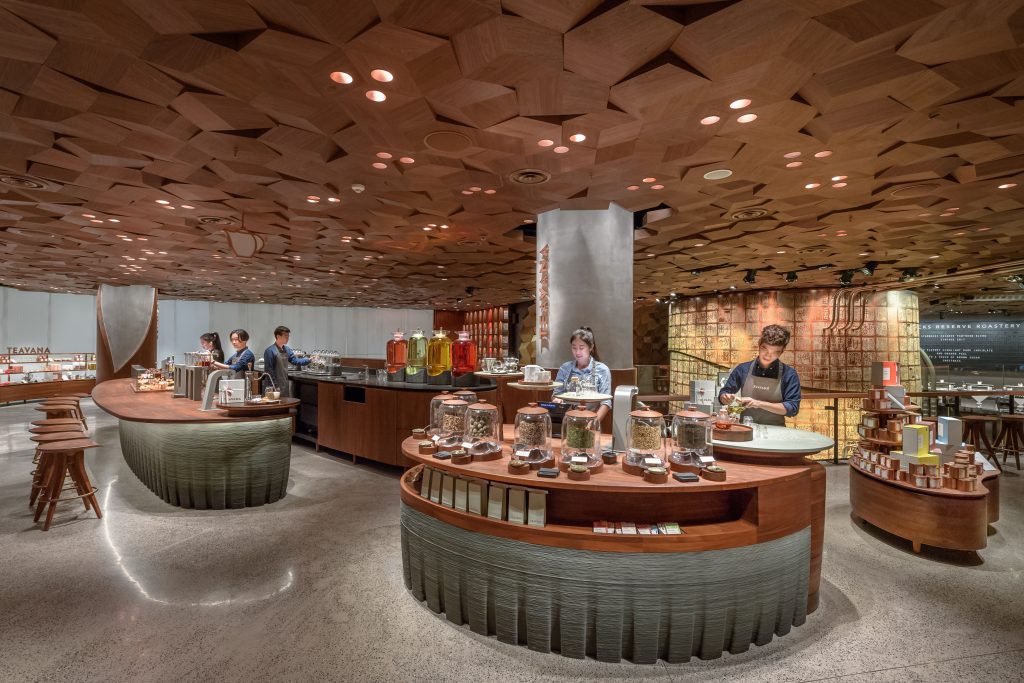A hot topic in the retail sector, 3D printing continues to find new applications on the shop floor. One of the most popular areas of this market is in footwear, which now includes 3D printed mid soles from Adidas and Carbon, EOS and Underarmour and Peak Sport, and insoles from companies like Superfeet and RESA Wearables.
Another popular application is the use of 3D printing to construct an innovative storefront. Only two weeks ago we saw hands on how fashion brand Bottletop has used robotic arms to 3D print the interior of its flagship London store.
Now, pulling out all the stops in its latest retail experience, Starbucks has opened the Shanghai Reserve Roastery complete with augmented reality and 3D printed features.

Inside the “theatre of coffee”
On average, in China, a new Starbucks opens every 15 hours, making it the chain’s fastest growing market. In Shanghai alone, Starbucks already has 600 stores, racking up a national total of 3,000.
The Reserve Roastery is only the second store of its kind the world, following a Seattle debut in 2014. The Reserve stores are designed as a kind of “theatre of coffee” enhancing products with different stations and produce that you wouldn’t typically find in your average corner store.
In the 2,700-square-meter Shanghai Roastery, Starbucks has installed a Rocco Princi Italian bakery, an interactive online and offline AR roasting experience, and the first even Teavana Bar for special blend teas.
Just our cup of tea
The base of the Teavana Bar is 3D printed. According to the company it has been made using recycled materials, in what might be a kind of geocement. The green-grey layers build up to form a ridged, organic shape, which is 7.5 meters in length.
The exact method behind the 3D printed tea bar’s construction is still, so far, under wraps, and the manufacturer has not been named. However, the construct was most likely performed by a specially programmed robotic arm, as seen in other 3D printing construction projects from Apis Cor, Neri Oxman and the IAAC.

Subscribe to the 3D Printing Industry newsletter, like us Facebook and follow us on Twitter to stay up to date with all the latest news.
Nominate 3D printing application of the year and more in the second annual 3D Printing Industry Awards.
Featured image shows a barista serving tea in the new Starbucks Reserve Roastery Shanghai. Photo via Starbucks


